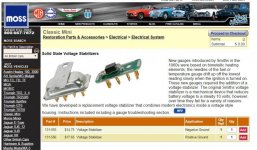rjc157
Jedi Warrior
Offline
I know this thread has been beaten to death but I bought a new fuel tank sender hoping that it will eliminate the jumping up and down of the needle while driving but no luck I do get a steady reading at rest I added an additional ground from the sender to the car is there a fix or just not look at the gauge while driving very frustrating

 Hi Guest!
Hi Guest!

 smilie in place of the real @
smilie in place of the real @
 Pretty Please - add it to our Events forum(s) and add to the calendar! >>
Pretty Please - add it to our Events forum(s) and add to the calendar! >> 


